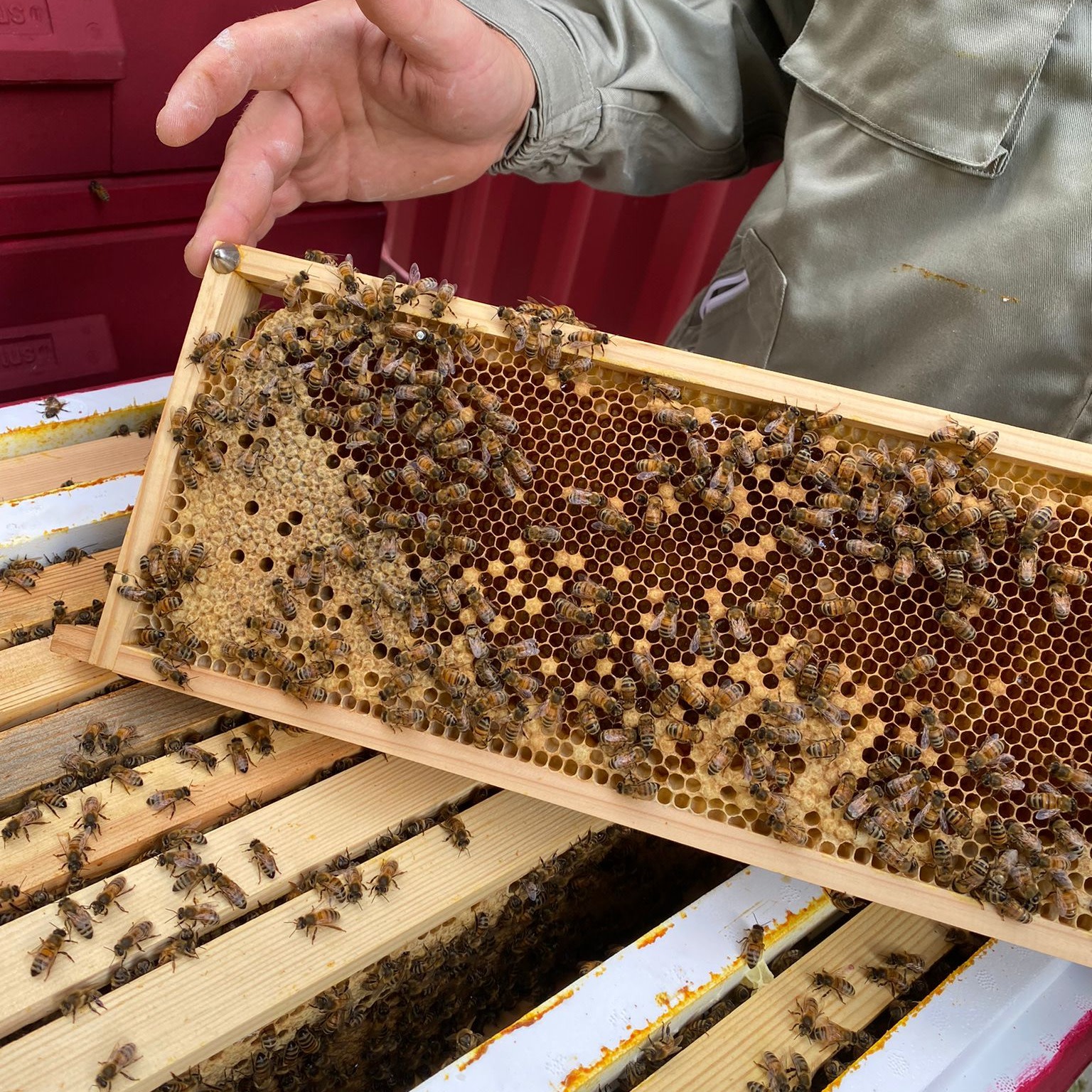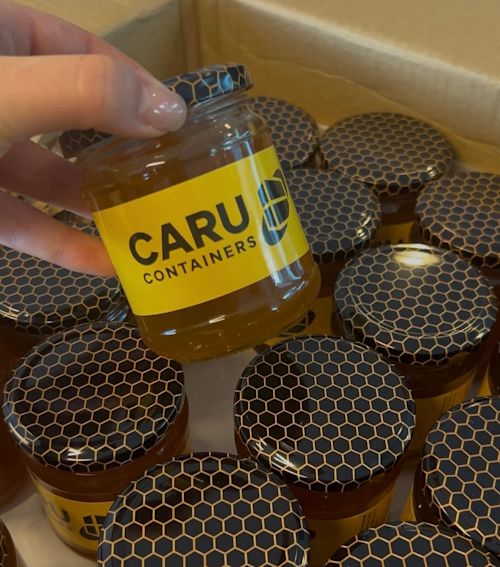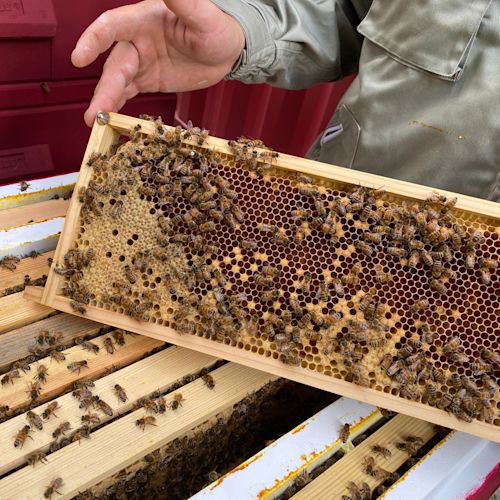Please select the country where you would like to receive containers.

Why our company is helping to save the bees and how were doing it 🐝
Bees are essential to our daily lives. They pollinate most of our fruits, vegetables and flowers. Without them, much of our food would disappear, and so would biodiversity. That’s why CARU Containers has two beehives at our depot in Rotterdam. A down-to-earth initiative that helps nature thrive, close to home.
Small actions, big impact
Each hive houses thousands of bees. They collect nectar, build honeycombs and work on their reserves. It keeps the colony strong and brings something extra special: raw, locally harvested honey. From spring honey to linden honey, we jar enough to last the whole year.
And the honey? We love to share it. With colleagues and partners, as a small but meaningful symbol of our shared commitment to sustainability and mindful choices.
More than just honey
With this initiative, CARU aims for more than honey. We support local ecosystems and boost biodiversity. Our bees pollinate flowers near the depot. Around the hives, we plant pollen-rich flowers, a helping hand for wild bees and other pollinators too.

What about the Varroa mite?
What about the Varroa mite?
The Varroa mite is still a major global threat to bees. Our beekeeper Daan treats our colonies with natural methods like brood breaks and oxalic acid, keeping our bees healthy and the honey pure.
Sustainability is in the everyday
At CARU, we believe sustainability isn’t about big promises. It’s in the small, daily choices. Our beehives are a clear example: visible at our depot, valuable to our environment, and a reminder of why we care about the world we live and work in. A small initiative with lasting impact. And honestly… the honey tastes amazing!

















































